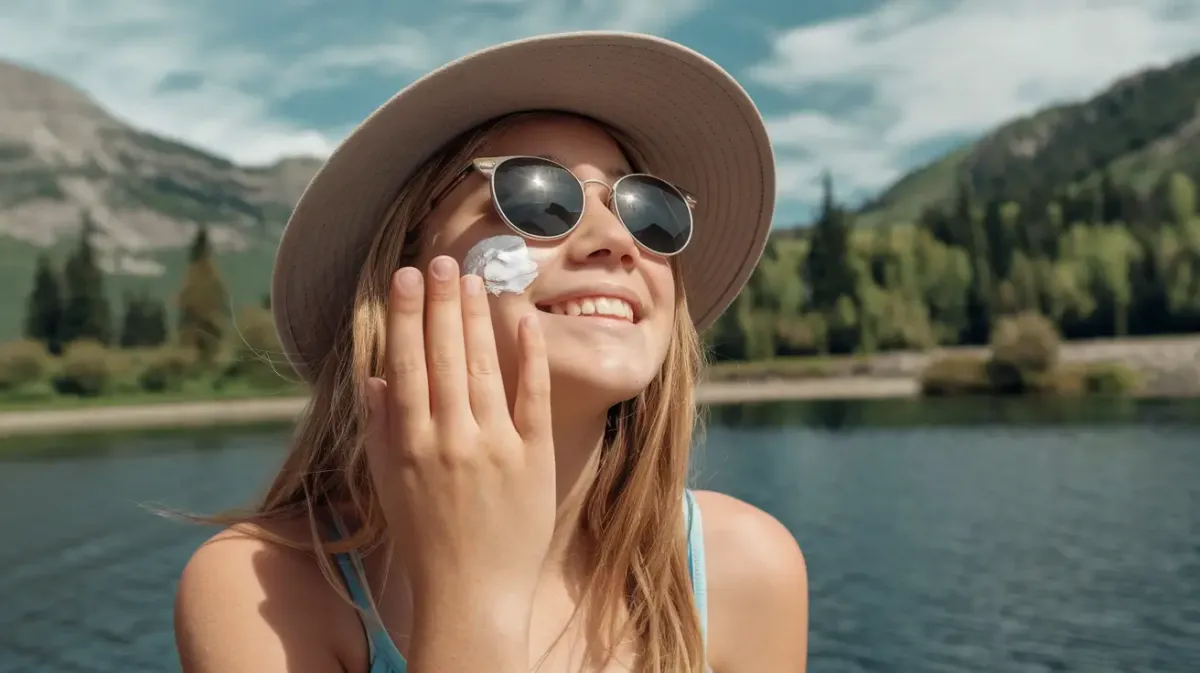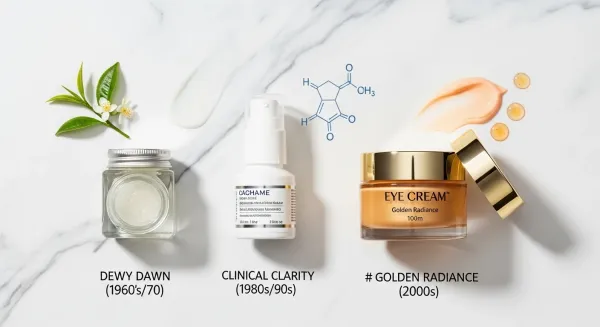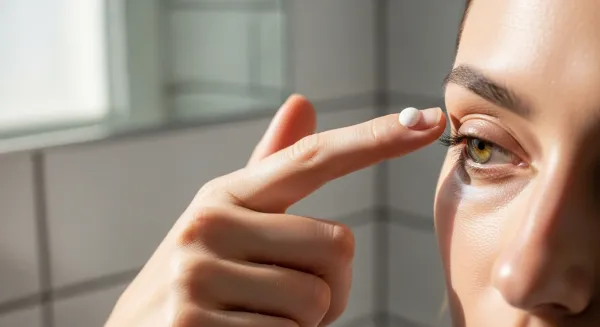How to Start Using Sunscreen as a Teen
Discover how to start using sunscreen as a teen with our comprehensive guide. Learn application tips, choosing the right SPF, and making sun protection a daily habit.

Hey there, future sun protection expert!
If you're a teen wondering how to start using sunscreen, you've landed in the right spot.
Let's dive into the world of UV protection and learn how to keep your skin looking fabulous for years to come. Trust me, your future self will thank you for this!
Key Takeaways: How to Start Using Sunscreen as a Teen
- Choose a broad-spectrum sunscreen with at least SPF 30
- Apply sunscreen 15 minutes before sun exposure
- Use about one ounce (a shot glass full) for full body coverage
- Reapply every 2 hours or after swimming/sweating
- Don't forget often-missed areas like ears, neck, and feet
- Make sunscreen a daily habit, even on cloudy days
- Combine sunscreen use with other protective measures like hats and shade
Why Sunscreen is a Teen's Best Friend
Let's get real for a second. You might be thinking, "I'm young, why do I need sunscreen?" Well, here's the deal: sun damage starts early.
Those harmful UV rays don't care how old you are. They're like that annoying kid at school who doesn't respect personal space – always trying to mess with your skin.
Using sunscreen as a teen is like setting up a force field against these rays. It's not just about preventing sunburns (although that's important too). It's about protecting your skin from long-term damage that can lead to premature aging and even skin cancer.
Sunscreen and anti-aging benefits go hand in hand, starting from your teenage years.
"The best anti-aging product is sunscreen."
- Dermatologists everywhere, probably
Choosing the Right Sunscreen: Your Skin's New BFF

Alright, let's talk about picking the perfect sunscreen. It's like choosing a new phone – you want one with all the right features. Here's what to look for:
- Broad-spectrum protection: This means it blocks both UVA (aging) and UVB (burning) rays
- SPF 30 or higher: SPF 30 blocks about 97% of UVB rays
- Water-resistant: Great for sweaty days or beach trips
- Non-comedogenic: Won't clog your pores (bye-bye, breakouts!)
For teens with acne-prone skin, choosing sunscreen for acne-prone skin is crucial. Look for lightweight, oil-free formulas that won't make your skin freak out.
Application 101: Mastering the Sunscreen Game
Now that you've got your sunscreen, it's time to learn how to apply it like a pro. Think of it as painting a masterpiece, but the canvas is your skin, and the paint is sun protection.
The Shot Glass Rule
Use about one ounce of sunscreen (that's a shot glass full) to cover your entire body. For your face, use about a nickel-sized amount. Remember, more is more when it comes to sunscreen!
The Two-Finger Rule for Face Application
For your face, use the "two-finger rule": Squeeze a line of sunscreen along your index and middle fingers. That's the perfect amount for your face, neck, and ears.
| Body Part | Amount of Sunscreen |
|---|---|
| Face | Nickel-sized amount |
| Arms | 1 teaspoon each |
| Legs | 2 teaspoons each |
| Torso (front and back) | 2 teaspoons total |
Timing is Everything
Apply sunscreen 15-30 minutes before sun exposure. This gives it time to form a protective layer on your skin. It's like prepping for a big game – you need that warm-up time!
Reapplication: The Secret Weapon
Here's where most people drop the ball. Reapply every 2 hours, or more often if you're swimming or sweating. Set a reminder on your phone if you need to. Your skin will thank you!
Don't Forget These Spots!
Some areas are easy to miss, but they need love too. Don't forget:
- Ears (especially the tops and behind them)
- Back of the neck
- Tops of feet
- Lips (use a lip balm with SPF)
- Scalp (especially if you have a part in your hair)
For more tips on often-missed spots, check out our guide on common sunscreen mistakes.
Sunscreen and Your Daily Routine
Making sunscreen a part of your daily routine is key. It's like brushing your teeth – you just do it without thinking. Here's how to incorporate it:
- Cleanse your face
- Apply any treatments or serums
- Moisturize (if needed)
- Apply sunscreen
- Wait a few minutes before applying makeup (if you wear it)
Pro tip: Look for a moisturizer with built-in SPF to save time in the morning!
Sunscreen Myths: Busted!
Let's clear up some common misconceptions about sunscreen:
| Myth | Truth |
|---|---|
| "I don't need sunscreen on cloudy days" | UV rays can penetrate clouds. Use sunscreen every day! |
| "Sunscreen causes acne" | Non-comedogenic sunscreens won't clog pores |
| "Dark skin doesn't need sunscreen" | All skin tones need sun protection |
| "Higher SPF lasts longer" | Higher SPF doesn't mean longer protection. Reapply regularly! |
Beyond Sunscreen: Other Sun Protection Tips
While sunscreen is your main defense, it's not the only player in the game. Here are some extra tips to level up your sun protection:
- Seek shade: Especially during peak sun hours (10 am to 4 pm)
- Wear protective clothing: Long sleeves, wide-brimmed hats, and sunglasses
- Use UV-protective clothing: Some clothes have built-in sun protection
- Be extra careful near water, snow, and sand: These surfaces reflect UV rays
For more on creating a comprehensive sun protection routine, check out our guide on how to protect your skin from UV rays.
Choosing the Right Ingredients
Not all sunscreens are created equal. Here's a quick guide to some common ingredients:
- Zinc Oxide and Titanium Dioxide: Physical blockers that sit on top of the skin. Great for sensitive skin!
- Avobenzone and Octinoxate: Chemical filters that absorb UV rays
- Helioplex and Mexoryl SX: Advanced ingredients for enhanced protection
Avoid ingredients like oxybenzone if you're concerned about environmental impact or have sensitive skin. For more on this, check out our article on sunscreen ingredients to avoid.
Sunscreen and Acne: Finding the Balance
If you're dealing with acne, you might be worried about sunscreen making it worse. But fear not! There are plenty of options that won't clog your pores or cause breakouts.
- Look for "non-comedogenic" on the label
- Try gel or liquid formulas instead of thick creams
- Consider mineral sunscreens (zinc oxide or titanium dioxide)
Remember, sun exposure can actually make acne worse, so protecting your skin is crucial. For more tips, check out our guide on best sunscreens for acne-prone skin.
Making Sunscreen Fun (Yes, Really!)
I know, I know. "Fun" and "sunscreen" don't usually go together. But hear me out:
- Try different formulas: Sprays, sticks, gels – find what you like best
- Make it a group activity: Have sunscreen application parties with friends before hitting the beach
- Use apps: Some apps remind you to reapply and track UV levels
- Get creative: Use sunscreen to draw fun patterns before rubbing it in
Conclusion: Your Future Skin Will Thank You
Starting to use sunscreen as a teen is one of the best things you can do for your skin. It's like giving your future self a high-five. Remember, consistency is key. Make it a habit, and it'll become as natural as checking your phone (which, let's face it, you do a lot).
By protecting your skin now, you're setting yourself up for healthier, younger-looking skin in the future. Plus, you're drastically reducing your risk of skin cancer. That's a win-win if I ever saw one!
So go forth, young sun warrior, and spread the gospel of sunscreen. Your skin (and your friends' skin) will thank you for it!
Frequently Asked Questions
Can I use the same sunscreen for my face and body?
While you can, it's often better to use a specialized facial sunscreen as they're formulated to be gentler and less likely to cause breakouts. The skin care products you choose will depend on your skin type. If you have acne-prone skin, look for cleansers and moisturizers that say "oil free" or "non-comedogenic," as these won't clog your pores. If you have sensitive skin, use mild, "fragrance free" products, as products containing fragrances can leave skin feeling irritated and dry. Creams are best for dry skin and applying on the face. Gels are good for oily complexions and hairy areas. Sticks are good to use around the eyes.
Do I need sunscreen if I'm inside all day?
Yes! UV rays can penetrate windows, so it's best to wear sunscreen even indoors, especially if you sit near windows. UVA rays (or aging rays) can prematurely age your skin, causing wrinkles and age spots, and can pass through window glass. You should apply sunscreen every day on skin not covered by clothing if you will be outside. The sun emits harmful UV rays year-round. Even on cloudy days, up to 80% of the sun's harmful UV rays can penetrate the clouds. Visible light from the sun can increase skin darkening, also known as hyperpigmentation, particularly for people with darker skin tones. To protect yourself from visible light, seek shade, wear sun-protective clothing, and apply a broad-spectrum sunscreen that says "tinted" on the label and has an SPF of 30 or higher.
How long does sunscreen last once opened?
Most sunscreens are good for about 3 years. Check the expiration date and replace it if it changes color or consistency. The FDA requires that all sunscreens retain their original strength for at least three years. Some sunscreens include an expiration date. If the expiration date has passed, throw out the sunscreen. If you buy a sunscreen that does not have an expiration date, write the date you bought the sunscreen on the bottle. That way, you'll know when to throw it out. You also can look for visible signs that the sunscreen may no longer be good. Any obvious changes in the color or consistency of the product mean it's time to purchase a new bottle. Avoid leaving sunscreen containers under direct sunlight, or in a hot environment such as inside of the car, as this will speed up the rate that sunscreen ingredients break down.
Can I layer sunscreen under makeup?
Absolutely! Wait a few minutes after applying sunscreen before putting on makeup to allow it to set. Apply sunscreen to dry skin 15 minutes before going outdoors. Some moisturizers and cosmetics have SPF. While these products are convenient, remember that sunscreen needs to be reapplied approximately every two hours when you're outdoors. After using a Revitalift Hyaluronic Acid Ampoule, try smoothing on the L'Oréal Paris Triple Power Day Lotion SPF 30 or L'Oréal Paris Triple Power Anti-Aging Moisturizer Fragrance Free—depending on the time of day—to complete your skin care routine. It's best to start with thin, water-based products like toners and ampoules, followed by thicker ones like moisturizers and oils.
Is a higher SPF always better?
Not necessarily. SPF 30 blocks 97% of UVB rays, while SPF 50 blocks 98%. The difference is minimal, so focus on proper application and reapplication instead. Dermatologists recommend using a sunscreen with an SPF of at least 30, which blocks 97% of the sun's UVB rays. Higher-number SPFs block slightly more of the sun's UVB rays, but no sunscreen can block 100% of the sun's UVB rays. It is also important to remember that high-number SPFs last the same amount of time as low-number SPFs. A high-number SPF does not allow you to spend additional time outdoors without reapplication. As many individuals only apply about 20–50% of the amount of sunscreen needed to achieve the amount of SPF on the label, application of high-SPF sunscreens helps to compensate for this under-application. Sunscreen should be reapplied approximately every two hours when outdoors, even on cloudy days, and after swimming or sweating.




